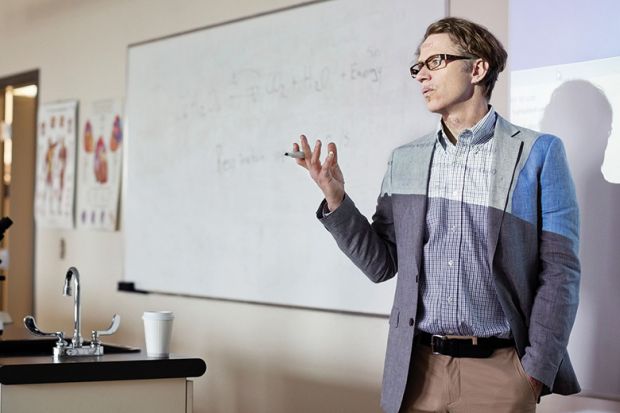Tougher entry standards for education degrees could leave Australian schools with a skeleton crew of lookalike teachers, academics have warned.
Education deans say that a new wave of criticism of teaching students, including proposals to limit degrees to the top 30 per cent of school-leavers, risks leaving the profession decimated and lacking diversity.
They say that education student numbers have already fallen alarmingly thanks to similar criticisms a few years ago, and because of cuts to higher education funding in last December’s mini-budget.
The proposals have been triggered by revelations that about 8 per cent of teaching students have failed literacy and numeracy tests based on exams designed for 15-year-olds. From next year, Victoria’s education degrees will only accept school-leavers with Australian Tertiary Admission Ranks of at least 70 – up from 65 this year.
New South Wales limits entry to high school graduates who scored at least 80 per cent in three subjects, including English. Adrian Piccoli, who introduced the requirements as education minister in 2016, said that the bar should be raised higher to address a decline in Australian school students’ performance.
“There’s this perception that it doesn’t matter who you take into education,” said Mr Piccoli, now head of an education research institute at the University of New South Wales. “It matters a lot.”
The Australian Council of Deans of Education said that minimum entry requirements made little difference, because only 29 per cent of teaching students were high school leavers admitted through their scores. Most were mature-aged students who gained entry on the strength of other educational or work experience.
ACDE president Tania Aspland said that the “bad media” surrounding such proposals damaged the profession’s reputation. “When someone tells her parents, ‘I’m going to be a teacher’, they say, ‘what the hell for?’”
Professor Aspland said that when Victoria had introduced an ATAR cut-off of 65, teaching enrolments had fallen by 15 per cent, with a similar decline expected next year when the benchmark rises to 70. NSW enrolments had slumped by at least 20 per cent in the wake of its entry requirements.
Government statistics show that the number of new teaching student numbers plunged by 11 per cent in 2015, after years of solid growth had spawned predictions that the graduates would be unemployable. A 3 per cent decline followed in 2016, triggering concerns of a looming undersupply of teachers.
While 2017 statistics are yet to be released, December’s cut to university teaching grants has exerted further pressure on student numbers. Professor Aspland’s institution, the Australian Catholic University, has already axed a combined teaching and science programme, and she said that other universities were considering similar measures.
“They’re building schools in NSW and Victoria because of population growth,” she said. “If this keeps going, there will be no teachers to take up these roles in four to six years.”
The problem would be exacerbated by the suspension of the demand-driven higher education system, which had encouraged teaching enrolments from underprivileged and indigenous communities. “We will have a reproduction of Caucasian middle-class society being the bulk of the teaching force.”
Mr Piccoli said that tougher entry standards would boost the profession’s prestige. “When you need more doctors, you don’t drop standards. I don’t think people would accept that in medicine, so I’m not sure why we should accept it in education.”
Register to continue
Why register?
- Registration is free and only takes a moment
- Once registered, you can read 3 articles a month
- Sign up for our newsletter
Subscribe
Or subscribe for unlimited access to:
- Unlimited access to news, views, insights & reviews
- Digital editions
- Digital access to THE’s university and college rankings analysis
Already registered or a current subscriber?







